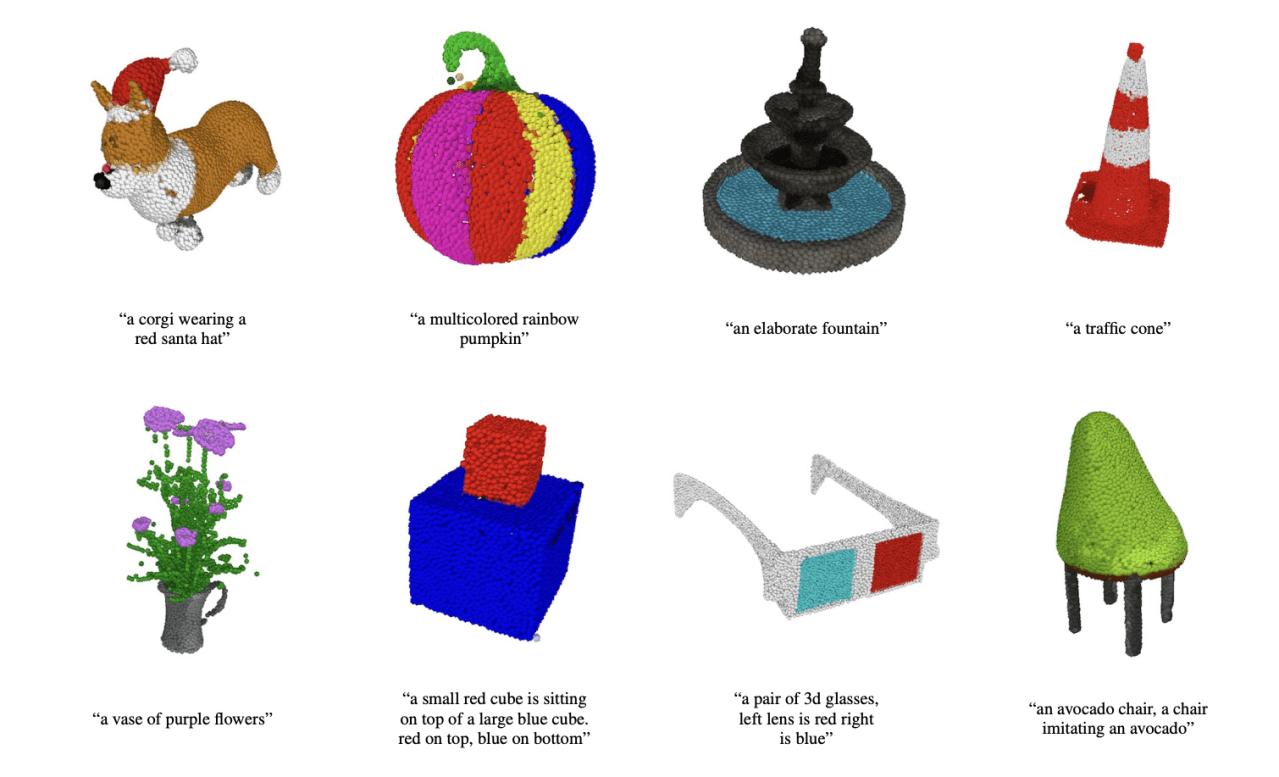The landscape of artificial intelligence is continually evolving, and each breakthrough brings with it a wave of possibilities that were once thought to be the stuff of science fiction. One of the latest leaps forward comes from OpenAI with the introduction of Point-E, a groundbreaking tool that generates 3D models from simple text prompts. As this technology unfolds, it poses intriguing questions about the future of design, manufacturing, and even intellectual property. Today, we’ll delve deep into Point-E, its implications, and its place in the larger context of generative AI.
Understanding Point-E: How It Works
At its core, Point-E operates by translating textual descriptions into 3D structures, but it does so in a unique way. Instead of generating traditional 3D models, it creates point clouds—discrete sets of data points in a three-dimensional space. This approach enables a faster synthesis compared to previous methods, hence the ‘E’ for efficiency that rounds out its name. With the ability to produce these point clouds in just a couple of minutes using a single Nvidia V100 GPU, Point-E is already outpacing many existing technologies in terms of speed.
However, the technology isn’t without its limitations. While point clouds are computationally lighter to generate, they often lack the fine details and textures that would typically define a sophisticated 3D model. To bridge this gap, OpenAI has integrated an additional AI system that converts point clouds into detailed mesh structures. This dual system, consisting of the text-to-image model and image-to-3D model, enables users to start from just a descriptive text input.
Applications Beyond Imagination
The applications for Point-E extend far beyond mere novelty. Here are several domains where this technology could profoundly impact operations:
- 3D Printing: The point clouds generated by Point-E can be directly utilized in 3D printing, allowing for the rapid creation of tangible objects from a text prompt.
- Game and Animation Development: Once the system is polished further, integrating accurate meshes into game development could significantly speed up the production of environments and characters.
- Architectural Visualization: Architects can leverage AI-generated models to visualize projects in real-time, expediting the design process while refining client pitches.
- Scientific Research: In fields like biology or chemistry, quickly generated models can aid researchers in visualizing complex structures, speeding the path to innovation.
Other exciting possibilities include integration into online marketplaces where digital models are bought and sold, enhancing accessibility for creators and consumers alike.
The Dark Side of Innovation: Copyright and Ethical Concerns
As with any innovation, particularly in a space as closely intertwined with human creativity as 3D modeling, significant ethical considerations arise. One primary concern is intellectual property. As Point-E generates models that are derived from its trained data, the line between inspiration and infringement blurs. Existing marketplaces, like CGStudio and CreativeMarket, might see upheaval if AI-generated models adversely affect artists who earn their livelihood through original 3D designs.
Moreover, OpenAI’s acknowledgment of biases within training data calls for a careful approach to using this technology. There’s potential for misuse, especially considering the lack of safeguards preventing the creation of harmful or dangerous objects. For this reason, the developers have positioned Point-E as a “starting point”, emphasizing the need for further research and refinement in the realm of text-to-3D synthesis.
Conclusion: A New Frontier in 3D Technology
The rollout of Point-E signifies more than just a leap forward in AI-based modeling; it opens up a discussion on the balance of technology’s benefits and pitfalls. Though it promises significant efficiency and application across various industries, the ethical implications cannot be overlooked. As we continue to push the boundaries of what’s possible with AI, developments like Point-E necessitate not only innovation but thoughtful discourse on the impact of such advancements on creators and society at large.
At fxis.ai, we believe that such advancements are crucial for the future of AI, as they enable more comprehensive and effective solutions. Our team is continually exploring new methodologies to push the envelope in artificial intelligence, ensuring that our clients benefit from the latest technological innovations.
For more insights, updates, or to collaborate on AI development projects, stay connected with fxis.ai.

